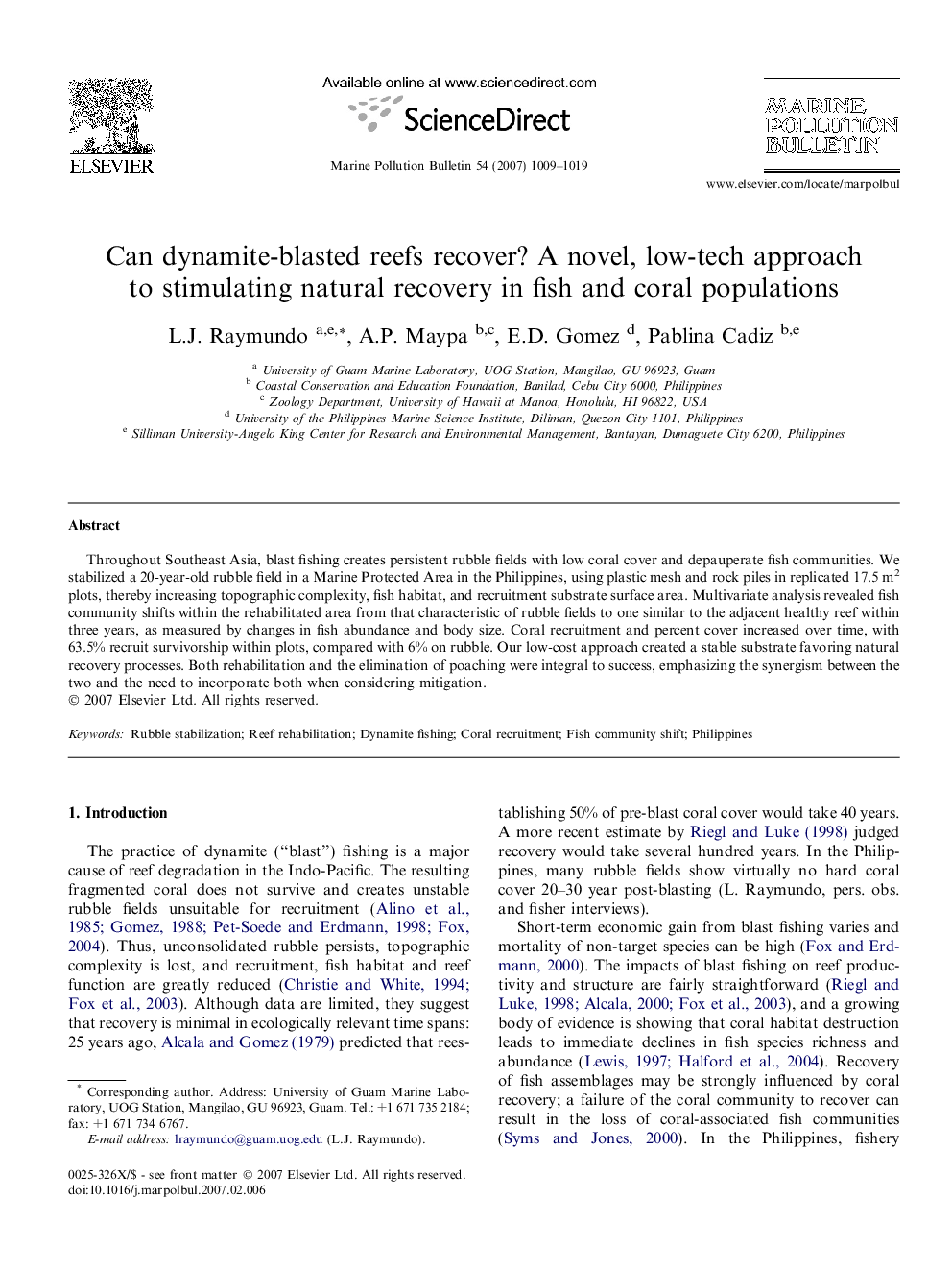| Article ID | Journal | Published Year | Pages | File Type |
|---|---|---|---|---|
| 4477445 | Marine Pollution Bulletin | 2007 | 11 Pages |
Throughout Southeast Asia, blast fishing creates persistent rubble fields with low coral cover and depauperate fish communities. We stabilized a 20-year-old rubble field in a Marine Protected Area in the Philippines, using plastic mesh and rock piles in replicated 17.5 m2 plots, thereby increasing topographic complexity, fish habitat, and recruitment substrate surface area. Multivariate analysis revealed fish community shifts within the rehabilitated area from that characteristic of rubble fields to one similar to the adjacent healthy reef within three years, as measured by changes in fish abundance and body size. Coral recruitment and percent cover increased over time, with 63.5% recruit survivorship within plots, compared with 6% on rubble. Our low-cost approach created a stable substrate favoring natural recovery processes. Both rehabilitation and the elimination of poaching were integral to success, emphasizing the synergism between the two and the need to incorporate both when considering mitigation.
